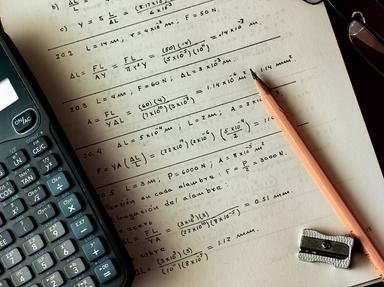Quiz Answer Key and Fun Facts
1. If I have a pattern that starts with 1, 4, 9, 16, 25... and so on, which of the following numbers would not appear?
2. Which of the following numbers does not fit the pattern: 1, 1, 2, 3, 5, 8, 13...?
3. If I were to produce a pattern in binary, which of the following options could I NOT possibly see?
4. What number will not appear in the following pattern? 2, 3, 5, 7, 11, 13, 17...?
5. Which number does not appear if the following pattern is continued: 1, 3, 6, 10, 15, ...?
6. Is it correct that the number 144 does NOT appear in the number pattern 1, 8, 27, 64, ...?
7. Which number would NOT appear if the following pattern was continued? 3, 5, 9, 17, 33, ...?
8. Let's look at a descending pattern now. Which number does NOT appear in the following pattern:
1, 0.5, 0.25, 0.125, ...?
9. Which number does NOT fit the following pattern: 1, 1, 2, 1.414, 3, 1.732, 4, 2, ...?
10. Finally let's have a look at a binary pattern. From the following pattern, which of the following numbers would NOT appear in the first 10 elements: 1, 10, 11, 100, 101, ...?
Source: Author
timence
This quiz was reviewed by FunTrivia editor
Tizzabelle before going online.
Any errors found in FunTrivia content are routinely corrected through our feedback system.


